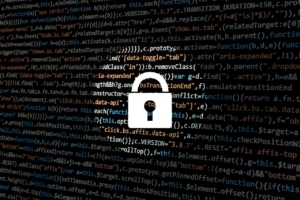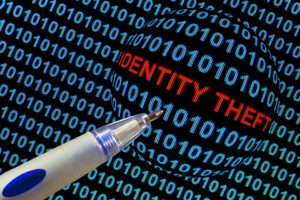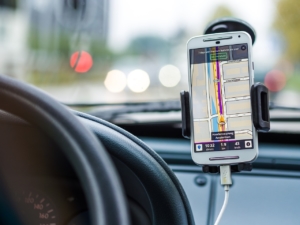Covid-19 Remote Desktop Has Significant Risks
Are you newly working from home? Or are you an old pro? Either way, it is likely you are using some form of remote desktop protocol. Those of us who have been working home as our primary means of earning a living, know these tools very well and are accustomed to eliminating the various distractions in our home environment in order to get the job done. There are some precautions to be aware of.

None of us think that we are going to get hacked, even though we have seen time and time again that it is very possible. Even the largest companies in existence have been hacked, and small businesses are even more at risk. You can add even more to this risk if you use a software called Remote Desktop.
Basically, Remote Desktop allows you to access computers remotely in your home or office and give network access to employees who are working remotely. However, when you give or have this access, you are opening up your network to hackers. Thousands of companies and individuals have fallen victim to this, and just one successful hack can be devastating to a small business.
Remote Desktop: What is It?
Remote Desktop, or RDP, is a very common software. In fact, if you have Microsoft Windows, you probably have this software and don’t even realize it. Though it is a very powerful tool for businesses, it is also not very secure.
Criminals know this, of course, and they have created a huge variety of tools to hack into this software. When they get access to the network, criminals can access company information and then take things like log-ins and passwords. Once they have this, they can buy and sell them so that other criminals can use them to access your network. Once they are in, they can do almost anything.
Are You at Risk?
There are estimates that there are over three million companies that theoretically have access to Remote Desktop. Most of them are small businesses and many manage their own IT services in house. If you are a small business and you have an in-house IT department, you could definitely fit into this category. What’s more is that hackers tend to target these businesses, too. Any company that has RDP access enabled is a target of hackers.
What Can You Do About It?
Hopefully at this point you are wondering what you can do to protect your business from hackers who like to access networks through RDP.
- If you aren’t using remote desktop, then the first thing you should do is to remove Remote Desktop from your network.
- Make sure to update your operating systems critical security patches which will inevitably update any software around remote desktop protocol.
- Update all software that could allow remote desktop to be vulnerable
- Make sure your wireless connections are encrypted which generally means password-protected.
- If you have a good reason for keeping it, you can also choose to restrict access by setting up a virtual private network, or VPN.
- Additionally, you can create a firewall to restrict its access
- Setting up multi-factor authentication is also a good idea if you want to keep this software.
- Just be aware that none of these solutions are fool proof except totally deleting the software.
ROBERT SICILIANO CSP, is a #1 Best Selling Amazon author, CEO of CreditParent.com, the architect of the CSI Protection certification; a Cyber Social and Identity Protection security awareness training program.



 Laptops
Laptops With synthetic identity theft, a person creates a new and very fake identity by combining the real information from a person with made-up information. You might not think this is a big deal, but it can be very bad for anyone who has their identity stolen.
With synthetic identity theft, a person creates a new and very fake identity by combining the real information from a person with made-up information. You might not think this is a big deal, but it can be very bad for anyone who has their identity stolen. Let’s imagine that you are in a local coffee shop with your laptop. All someone has to do is download a wireless network analyzer, which usually has a free trial, and with the right hardware and additional software they can often see what everyone is viewing online…unless they are protected. In some cases they can also read your emails that are going out and received, as well as texts you might be sending. Scary, right?
Let’s imagine that you are in a local coffee shop with your laptop. All someone has to do is download a wireless network analyzer, which usually has a free trial, and with the right hardware and additional software they can often see what everyone is viewing online…unless they are protected. In some cases they can also read your emails that are going out and received, as well as texts you might be sending. Scary, right? The big question here is how to prevent our young sons from growing up an becoming predatory men. Psychology tells us that the core of all painful behaviors are two feelings: not feeling worthy and feeling shameful. So, to stop creating predators, we must eliminate these feelings. Here are some things that we can do to start raising boys to be men and not sexual predators:
The big question here is how to prevent our young sons from growing up an becoming predatory men. Psychology tells us that the core of all painful behaviors are two feelings: not feeling worthy and feeling shameful. So, to stop creating predators, we must eliminate these feelings. Here are some things that we can do to start raising boys to be men and not sexual predators: Most people take for granted that Uber does background checks on its drivers, but there are actually a number of shady drivers who have recently been accused of crime, and it’s definitely not the first time they have had run ins with law enforcement. Some of these people are accused of committing crimes against their passengers, and that’s where things really get scary.
Most people take for granted that Uber does background checks on its drivers, but there are actually a number of shady drivers who have recently been accused of crime, and it’s definitely not the first time they have had run ins with law enforcement. Some of these people are accused of committing crimes against their passengers, and that’s where things really get scary. Be Aware
Be Aware This is where you can put a business continuity plan to good use. What does this do? It gives your business the best odds of success during any disaster.
This is where you can put a business continuity plan to good use. What does this do? It gives your business the best odds of success during any disaster.























